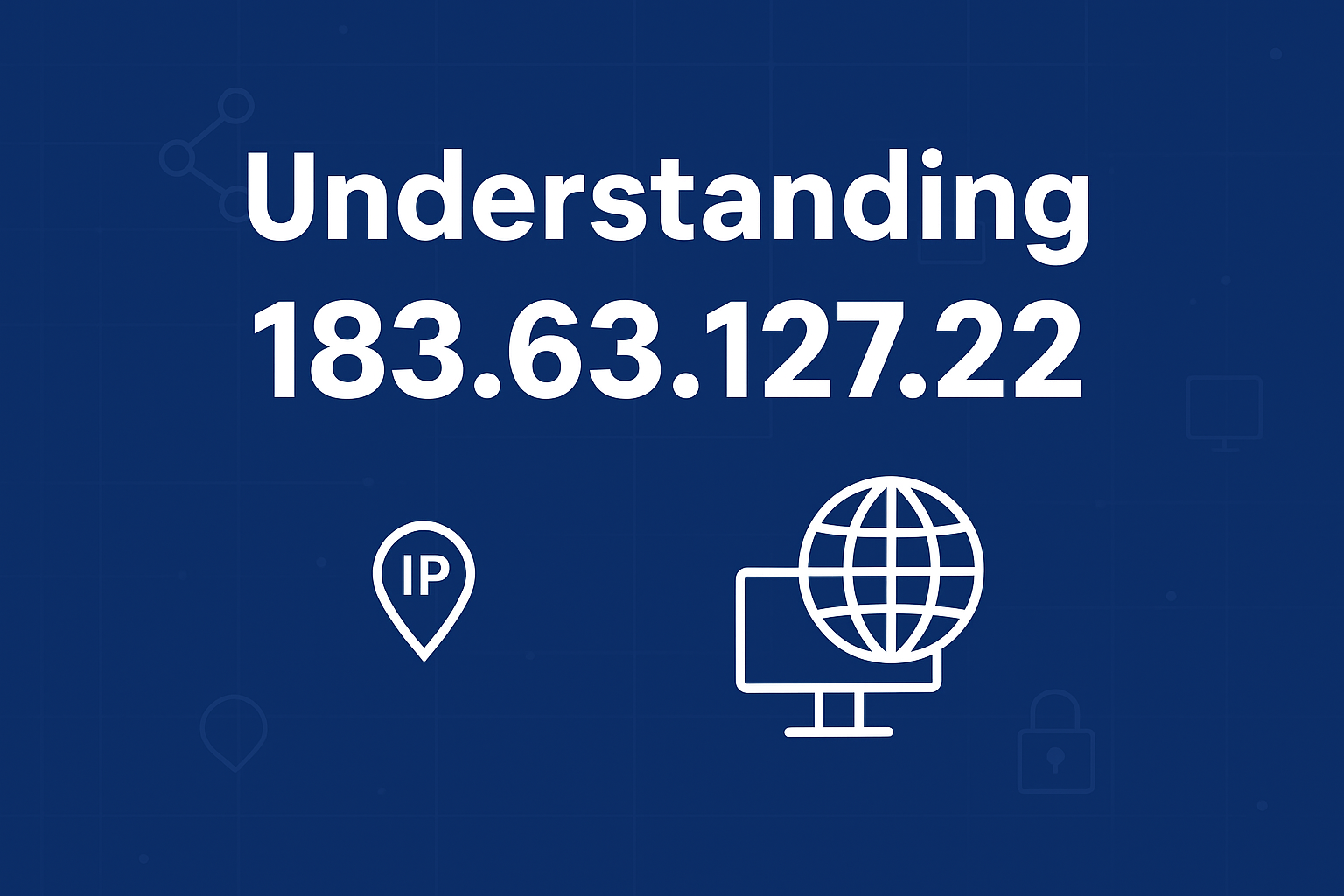
In the digital age, every device that connects to a network relies on a complex system of identifiers to communicate. Among these identifiers, IP addresses and ports form the backbone of modern networking. When combined, they create specific pathways for data to travel between machines and applications. A string like 172.16.252.214.4300 might appear to be just a random series of numbers at first glance, but in reality, it is a representation of a private IP address paired with a port number. This structure is fundamental for routing information inside networks, particularly in enterprise or development environments. By analyzing what 172.16.252.214.4300 means, we can gain a deeper understanding of how local networking works, why private IP addresses matter, how ports function, and what kind of security considerations come into play.
Breaking Down 172.16.252.214.4300
The expression 172.16.252.214.4300 can be split into two essential parts: the IP address and the port number. The IP component, 172.16.252.214, belongs to the IPv4 address system, which is structured into four octets separated by periods. This particular address falls within the 172.16.0.0 to 172.31.255.255 range, which is designated as private address space according to the standards defined by IANA and described in RFC 1918. Private IP addresses are not directly accessible over the public internet; they are reserved for use within internal networks, such as home Wi-Fi setups, corporate LANs, or cloud-based virtual private networks. The second part, 4300, is a port number. Ports act as specific endpoints for applications and services, telling the operating system and the network stack where to direct incoming data. Together, the two create a destination for communication that is both unique and purposeful: the IP identifies the device, while the port specifies the service running on that device. Thus, 172.16.252.214.4300 represents a unique service hosted internally on a specific machine within a local network.
The Role of Private IP Addresses
Private IP addresses like 172.16.252.214 serve an essential role in modern networking. Since the global pool of IPv4 addresses is limited, private ranges were introduced to allow organizations and individuals to reuse blocks of IPs within their own networks without consuming public address space. For instance, a business may assign thousands of devices private IP addresses within the 172.16.x.x range, and those devices can still communicate externally through a process called Network Address Translation (NAT). This ensures efficient use of the limited IPv4 space while also providing a layer of insulation between the internal network and the broader internet. In practice, when an address such as 172.16.252.214 is paired with a port like 4300, it enables internal services to remain hidden from the outside world, reducing the likelihood of unwanted external access. At the same time, administrators retain precise control over how internal resources are managed and accessed, which is critical for large organizations.
Understanding Ports and Why 4300 Matters
If an IP address can be compared to the street address of a building, then a port number is the equivalent of an apartment number. It specifies which resident—or in this case, which application—should receive the incoming traffic. Well-known ports such as 80 for HTTP or 443 for HTTPS are standardized and recognized across the globe, but higher numbers like 4300 typically fall into the range reserved for dynamic or private use. These ports are often assigned to custom-built applications, testing services, or specialized tools that do not require globally recognized assignments. In this context, 172.16.252.214.4300 could correspond to an internal company application running on port 4300, accessible only to users within the private network. By directing traffic to this endpoint, employees or developers can interact with the service without interfering with production systems or exposing sensitive data to the public internet.
Real-World Scenarios Involving 172.16.252.214.4300
While the string 172.16.252.214.4300 may not point to a publicly accessible server, it illustrates common networking practices within organizations. For example, a financial institution might host an internal analytics dashboard on this address and port, ensuring that only employees within the network can access critical business data. Similarly, a software development team could use this combination for a staging environment, allowing them to test new features safely before rolling them out to customers. In another scenario, IT departments might deploy monitoring tools or log aggregation services at such an endpoint, enabling administrators to oversee network performance without risking exposure of sensitive information. In each of these cases, the pairing of a private IP address with a non-standard port ensures that services remain compartmentalized, accessible, and secure within a controlled environment.
Security Implications of Using Private IPs and Custom Ports
Even though private IP addresses like 172.16.252.214 are not directly reachable from the internet, they still carry security risks. An improperly configured firewall or NAT rule could unintentionally expose internal services to external access. If an attacker were to discover such a misconfiguration, they could potentially exploit vulnerabilities in the service running on port 4300. Even within a local network, malicious insiders could attempt port scans to identify open ports like 4300 and launch attacks against the services behind them. Therefore, security practices remain essential even for endpoints such as 172.16.252.214.4300. Organizations typically mitigate these risks by implementing strict access control lists, requiring VPN connections for remote employees, and ensuring that services are updated regularly with security patches. Moreover, network monitoring tools can detect unusual activity, such as repeated attempts to access unauthorized services, and alert administrators to potential threats.
Troubleshooting and Connectivity Challenges
In practice, users or administrators may sometimes face issues when trying to connect to 172.16.252.214.4300. Connectivity problems can arise for a variety of reasons, ranging from simple network outages to more complex configuration errors. For instance, if the server hosting the application is offline or if the application bound to port 4300 is not running, the connection will fail. Firewalls may also block access if rules are not properly defined, preventing even legitimate users from reaching the service. Troubleshooting typically involves a step-by-step process: first checking whether the device at 172.16.252.214 is reachable via ping, then verifying that port 4300 is open and listening using tools like netstat or nmap. Administrators may also review NAT configurations or proxy settings if the service needs to be accessed from a different network segment. By carefully analyzing each layer of connectivity, IT teams can ensure that internal services remain both accessible to authorized users and secure from unauthorized access.
Educational Value of 172.16.252.214.4300
Although 172.16.252.214.4300 might not correspond to a widely recognized system on the internet, it provides an excellent teaching example for those learning about computer networks. By breaking down this string, students and professionals can gain a clearer understanding of IPv4 addressing, private versus public IP space, and the significance of port numbers. It also highlights real-world considerations such as service deployment, internal-only accessibility, and the importance of strong network security. For aspiring network administrators or cybersecurity specialists, practicing with private IP and port combinations like this one is an effective way to simulate real-world scenarios in a safe, controlled lab environment.
Conclusion
Ultimately, the sequence 172.16.252.214.4300 is much more than a collection of numbers. It represents the pairing of a private IPv4 address with a custom port, forming a unique endpoint for communication within a local network. While not globally routable, this type of address-port combination is crucial in real-world networking, where internal services need to be accessible yet isolated from the internet. From development servers to corporate intranet applications, such configurations allow organizations to innovate securely while maintaining control over their digital infrastructure. At the same time, administrators must remain vigilant, as even private endpoints like 172.16.252.214.4300 can become vulnerabilities if mismanaged. By studying this example, one gains not only a clearer view of how IP addresses and ports interact but also an appreciation for the layers of security, efficiency, and precision that define modern networking.




